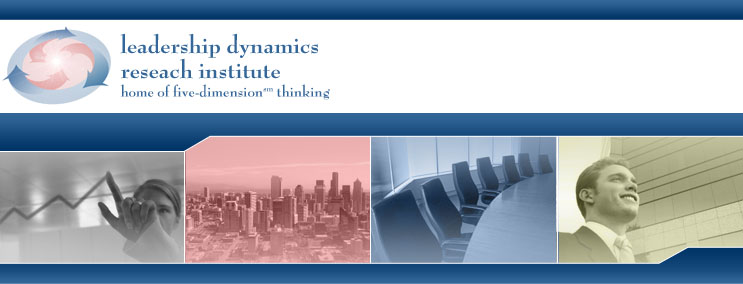
Welcome to
Leadership Dynamics Research Institute
The ldri.net website is a network of websites advancing the principles of value sharing.
The following articles represent capstone articles about leadership, social infrastructure, and the role of relationships in creating and sustaining value
Resilient Leadership: Integrating Stability and Agility
Leadership has emerged as a key to organizational effectiveness and as a critical tool for integrating quality throughout the organization. Simple but complete, the five dimension leadership model provides a framework for integrating both stability and agility, to enhance an organization’s ability to guide its customers and constituents but yet be continuously responsive to their needs.
The Power of Organizational Social Infrastructure
The formal organizational structure of an enterprise does not necessarily reflect how the work of the organization is actually accomplished. On the other hand, the informal infrastructure of the organization – whether or not it matches the formal structure – plays a key role in accomplishing the work of the organization. Social network analysis is a powerful tool for understanding the organization's informal infrastructure, then using that infrastructure to measure and benefit from social relationships to enhance enterprise stability and agility. It is important for organizational leadership to recognize the value of relationships, the impact of social networks on the work of the organization, the nature of social network analysis, and its value in identifying the informal infrastructure of the organization. Measurements of the strength and quality of relationships can then assist in efficiently and effectively focusing resources to build and sustain organizational relationships.
Finding the Invisible Hand: From Invisible Hand to Hand in Hand
The quality movement is changing the very nature of the economic paradigm on which modern successful companies operate. Companies which operate on an “invisible hand” paradigm focus on providing goods or services to enhance their own self-interest. Enlightened companies have moved to the “delight the customer” paradigm, which balances their own self-interest with a heightened responsiveness to the current and emerging needs of customers. This moves them beyond the “invisible hand” to a “hand in hand” relationship with their customers. A company’s hallmark of business excellence is its ability to build and sustain these ongoing relationships with internal and external customers. This relational dynamic not only increases responsiveness to customer needs; it also increases economic efficiency and enhances organizational effectiveness, often accompanied by enhanced profitability. This paper provides an economic context for understanding the value of relationships and how economic principles which have emerged from the quality movement itself can be integrated into the company culture to enhance excellence.
Copyright 2011 Leadership Development Corporation